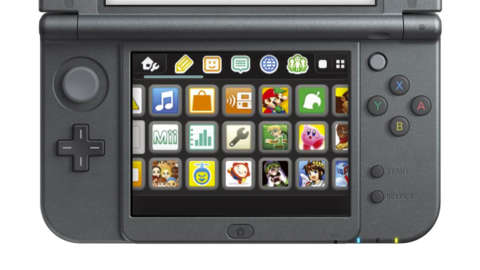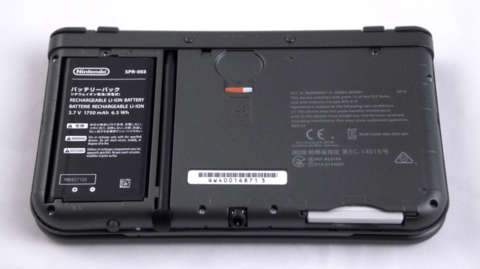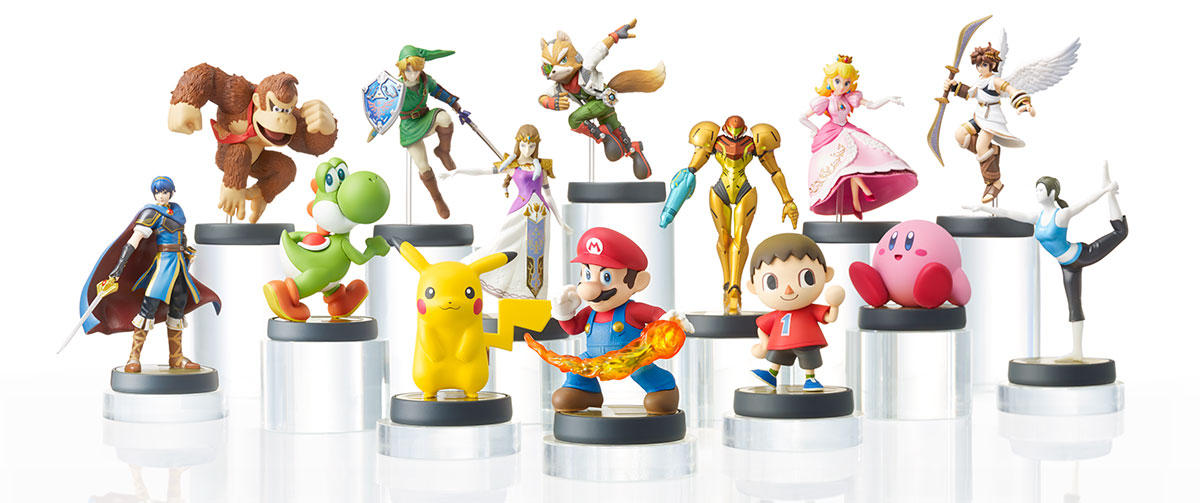Nintendo's always given people choices when it comes to handhelds, so it comes as no surprise to see new 3DS models on the horizon. Yet, the introduction of Nintendo's New 3DS and New 3DS XL feels different, probably because it's more than just a new form factor, or a stripped down value version. The new models have an improved processor, more buttons, and an extra camera that enhances the glasses-free 3D experience. They're practically the same size as the original 3DS and 3DS XL, but they're technically superior in every way. Where do New 3DS systems leave the old models? The answer: in their dust.
With so many improvements, the New 3DS is probably the best candidate for future 3DS customers, but what about people that have had a 3DS for years? Should they upgrade to a New 3DS and ride the portable wave with Nintendo, or, is it smarter to just accept that sometime down the road, there's a chance you'll potentially miss out on some really exciting games? The answer is easier than you think.
Super Stable 3D

For the first time since I started using a 3DS four years ago, I feel not just comfortable, but excited when using the stereoscopic 3D feature, and it's all thanks to one seemingly simple addition that makes a big difference. By installing a second camera above the New 3DS' top screen, the system detects your relative position and adjusts the 3D effect accordingly. Older 3DSs all had a fixed sweet spot, and if you weren't positioned correctly, the 3D effect would go out of focus all too easily, and more than likely, your finger would quickly put the 3D slider into the "off" position. Nintendo's camera-based solution works so well that you need to move the New 3DS into a nonsensical position to lose sight of the 3D effect. It's such a drastic improvement over previous models that once you see it in action, it's impossible to go back to the 3D of old. If you tended to turn off the 3D effect in the past because it was inconsistent and frustrating, you'll be amazed by how well the New 3DS handles the effect and how good games can look with 3D on full blast.
The New Inputs

Nintendo heard the cries years ago when it revealed the system with only a single analog stick, and made up for it in due time with the release of the Circle Pad Pro for 3DS and 3DS XL. These chunky, battery powered augmentations provided players with a second analog stick and two more shoulder buttons. It was a solution, but not a very elegant one. Thankfully, no such add-ons are needed for the New 3DS systems. There now sits two new buttons, ZL and ZR, between the standard L and R shoulder buttons, and Nintendo's crammed a small, stiff analog nub between the face buttons and the bottom screen. Though it looks uncomfortable and less flexible than the standard 3DS C-stick, it's surprisingly responsive. This addition will open the door for developers who need better camera controls in games, and give users a chance to experience what only Circle Pad Pro owners could before.
Improved Hardware
There's one reason that some future games will be exclusive to New 3DS: the improved CPU. The extra power within will allow developers to push the graphics hardware a little further without fear of bottlenecking performance. Having played Xenoblade Chronicles on New 3DS, it's not surprising that the game needs the extra oomph to run as well as it does, but realistically, it's also a modest bump in graphics compared to a game with a similar presentation, such as Monster Hunter 3 Ultimate. You're more likely to appreciate the effect it has on the 3DS at a system level. The operating system is snappier than before and games both download and load faster. The OS no longer feels sluggish or too demanding for the hardware. Now, it's just right.
| Component | New 3DS XL | 3DS XL |
|---|---|---|
| CPU | ARM11 MPCore 4x @ 268MHz | ARM11 MPCore 2x @ 268MHz |
| Co-processor | 4x VFPv2 | 2x VFPv2 |
| RAM | 256MB FCRAM | 128MB FCRAM |
| VRAM | 10MB | 6MB |
| GPU | PICA200 GPU @ 268MHz | PICA200 GPU @ 268MHz |
The operating system is snappier than before and games both download and load faster. The OS no longer feels sluggish or too demanding for the hardware. Now, it's just right.
Storage and Battery Life
Nintendo ushered in a lot of smart design decisions for New 3DS and New 3DS XL, but it's also changed a few things that aren't necessarily for the better. Up until now, 3DS stored data on SD cards, but New 3DS systems require Micro SD cards, which are much, much smaller. As a result, existing 3DS owners need to purchase a new card or settle for the included 4GB Micro SD card, which is enough to get you started but too small for long-term memory needs.

It's also much more difficult than before to access your memory card, at least for the XL model. In the past, the SD slot was readily available, but now you need to unscrew and dismantle the underside of New 3DS XLs to access the Micro SD slot. Granted, this isn't something you need to do maybe more than once or twice during the lifespan of your system, but when you do, you'll encounter stubborn screws and a panel that practically refuses to detach. It's inconvenient to say the least, but this setup allows for a great new feature: the ability to easily replace the system's internal battery. Charging, depleting, and recharging batteries can result in gradual degradation, so this will no doubt come in handy for some New 3DS owners down the road. Though New 3DS XL has only slightly better battery life than 3DS XL, roughly 30 minutes more per charge, this should also help curb the number of times you need to recharge your battery over time.
Ports, Lights, and Buttons
Apart from the additions I mentioned before, the primary 3DS controls have remained unchanged, but like the memory card slot, Nintendo remixed the layout of things such as lights, ports, and switches. Start and select are now discrete, circular buttons that live beneath the A, B, X, and Y buttons. Underneath the bottom screen, the home button sits alone. On the front of 3DS XL you'll find the game card slot, the headphone port, the stylus, and the power button, which have all been repositioned in some way. These changes are effectively harmless and inconsequential, but something's missing; the wireless radio switch that let you enable and disable Wi-Fi and Street Pass functionality without opening your 3DS. This was handy in cases where you wanted to save battery, or to make sure that you didn't miss Street Passes from other 3DS owners on your way to work or school. With New 3DSs, you need to press the home button and access the quick settings menu to turn the wireless radios on or off. It's a minor inconvenience.
Amiibo and NFC
There's a lot of buzz in the Nintendo world about Amiibo at the moment. Nintendo's NFC enabled figures are not just cute, but also functional, allowing you to carry your personal game data from one device to another. Wii U has NFC built into the GamePad, but New 3DS is the first portable from Nintendo with NFC built-in. Though Amiibo support in 3DS games is non-existent for the moment, expect that to change quickly. Nintendo's promised an external Amiibo reading add-on for existing 3DS hardware, but New 3DS owners will be ready for Amiibo right out of the box.

There's much to love about New 3DS XL's hardware, but Nintendo's made one decision that will prove to be an inconvenience for new 3DS owners: it decided not to include a charger in the box. This may have been done to cut costs, but it's going to burn uneducated customers that are picking up a 3DS for the first time if they miss the small note about the lack of an AC adapter on the box.
Like the oddly difficult back panel, the lack of an AC adapter isn't damning and shouldn't deter you from considering a New 3DS XL. With the extra controls, improved 3D, and a faster CPU, it's the most impressive 3DS to date. If you've been playing on a 3DS for years, the overall difference when you pick up a New 3DS XL is immediately apparent. After a week with the new system, I can't imagine going back.
Anyone who's picking up a 3DS for the first time should skip the other options and go right for a New 3DS or New 3DS XL, depending on what's available in their region. Picking up any other version is essentially setting yourself up for disappointment down the road when exclusive games start rolling out. If you care about Amiibo support, the choice is even easier. Existing 3DS owners should also consider an upgrade, if not now, perhaps when they're motivated by a certain game down the road. That said, if you spend a lot of time with your 3DS, but want a better experience overall, you won't be disappointed if you rush out on Feb. 13 to pick up the best handheld Nintendo's ever made.
